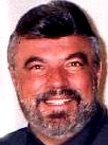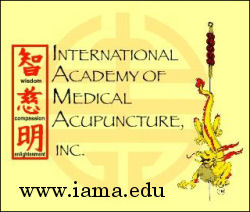Acupuncture & TCM Articles

Acupuncture Articles
by John A. Amaro L.Ac., Dipl.Ac.(NCCAOM), DC
 Dr. Amaro is an internationally known author, lecturer and practitioner beginning his practice of Acupuncture and Chiropractic in 1971. He has led 13 diplomatic Acupuncture study tours of The People's Republic of China escorting more than 500 doctors and practitioners. He has personally studied Acupuncture in nine separate Asian nations. Dr. Amaro is an internationally known author, lecturer and practitioner beginning his practice of Acupuncture and Chiropractic in 1971. He has led 13 diplomatic Acupuncture study tours of The People's Republic of China escorting more than 500 doctors and practitioners. He has personally studied Acupuncture in nine separate Asian nations.
He has received Certification in Acupuncture through the Columbia Institute of Chiropractic in 1973. This was one of the first Acupuncture postgraduate education programs for physicians in North America commencing in 1972.
He has been certified by the Waseda Acupuncture College in Tokyo, Japan in 1974 and graduated from the Chinese Medical Institute, Kowloon, China in 1976. He had previously taken postgraduate studies at the Tai Chung Medical School Taipei, China 1973.
"ACUPUNCTURE NEEDLE TECHNIQUES"
John A. Amaro L.Ac., Dipl.Ac.(NCCAOM), DC
According to ancient texts on Asian medicine, particularly the Internal Classic, two of the most significant techniques in acupuncture stimulation is that known as tonification (BU) and sedation (XIE) or sometimes referred to as reinforcing and reducing. That type of stimulation which is used to strengthen a slowed physiological function is tonification whereby that stimulation which is used to harmonize hyperactive physiologic functions is referred to as sedation. These techniques are known to acupuncturist the world over and are commonly used in clinical application.
There are a number of methods to achieve either tonification or sedation some are more basic than others but they are all significant. When the acupuncture needle is inserted, rotation of the needle gently and slowly is tonification whereby rotating the needle rapidly produces a sedative effect. This concept is generally regarded as being attributed to the classic book The Miraculous Pivot. In addition to gentle or rapid rotation the direction of the rotation is also considered important. Clockwise rotation or to the right, is sedation, whereas rotation to the left or counter-clockwise is tonification.
In addition to right and left rotation, The Miraculous Pivot mentions insertion and withdrawal of the needle as being significant. Insertion of the needle slowly and withdrawing rapidly is tonification whereas insertion rapidly and withdrawing slowly is sedative in nature. In classic insertion and withdrawal, tonification is achieved by insertion of the needle slowly then withdrawal is performed by lifting rapidly to just below the surface of the skin before complete withdrawal and of course the opposite is true for sedation.
Another factor which is considered in classic acupuncture, is closing or leaving open the hole from which the needle was withdrawn. At the time of withdrawal of the needle in order to tonify and to prevent the Qi energy from escaping, the acupuncturist will quickly close the hole by pressing on it. However, in sedation and in order to allow exogenous pathogenic factors to pour out of the body, from ancient times, the needle would be rotated and shaken in order to enlarge the hole then withdraw the needle allowing the pathogens to leave the body through the open hole.
The classic book known as The Great Compendium of Acupuncture and Moxibustion states that in insertion of the needle in the direction against the flow of Chi is sedation whereas in tonification, the practitioner would insert the needle tip in the direction of the Chi flow. The classic known as Plain Questions states, tonification is achieved when the needle is inserted while the patient inhales and withdraws the needles on exhalation. Whereas to achieve a sedative effect, the needle is inserted on exhalation and withdrawn on inhalation.
states that in insertion of the needle in the direction against the flow of Chi is sedation whereas in tonification, the practitioner would insert the needle tip in the direction of the Chi flow. The classic known as Plain Questions states, tonification is achieved when the needle is inserted while the patient inhales and withdraws the needles on exhalation. Whereas to achieve a sedative effect, the needle is inserted on exhalation and withdrawn on inhalation.
Another technique of tonification and sedation is quoted here from the text Classic on Medical Problems whereby it states. Heavy pressing of the needle to a deep level is referred to as tonification whereas forceful lifting of the needle to the superficial level is sedative. Following the arrival of "THE CHI" which is the sensation one feels following the arrival of the chi energy, tonification is obtained by lifting the needle gently and slowly while deep thrusting of the needle heavily and rapidly. In the sedative technique, the practitioner would lift the needle forcefully and rapidly while, thrusting the needle gently and slowly.
In a technique known as "Setting the Mountain on Fire', which is often administered in cases of deficiency cold syndromes, the needle is introduced in the tonification mode by slow insertion. Once the needle is inserted, thrusting the needle to three different levels namely ½ inch, one inch and 1 ½ inch by thrusting nine times each, this technique creates a warming sensation. The needle is then withdrawn rapidly and the hole is pressed.
Another technique known as "Penetrating Heaven Coolness" is often administered in situations where the body is in excess and heat syndromes are manifested. In this technique, the needle is introduced in the sedation mode by rapid insertion and slow withdrawal. Once the needle is in place to the 1 ½ inch level, the needle is lifted slightly and thrust six times. Following that, it is lifted to one inch and thrust and then lifted to ½ inch and thrust again. The needle is withdrawn slowly and the hole left open.
In needle application, the needle classically is retained for a period of time depending on where you studied acupuncture in the world, however, the general consensus is 20 minutes. However, the needle should never be removed while the body is experiencing the Chi phenomena and the body is literally holding on to the needle. During needle retention, various manipulations of the needle may be performed.
Even though the foregoing rules of needle insertion, withdrawing, rotation, depth of penetration, open or closing the hole etc. are all factors to consider in classic acupuncture application, many practitioners worldwide and in Asia disregard these rules while others revere them. Thank God the body is a self healing mechanism and appears to be able to use stimulation by the acupuncture needle to its benefit even though the practitioner may or may not adhere to the rules mentioned in this article.
The rules of needle stimulation mentioned here do not cover the entirety of techniques available for our use, but are considered the basic techniques which are generally known by all acupuncturist even though all acupuncturist may not use them.
Study these, if you have not utilized these procedures, reconsider to see if your clinical results may be favorably affected.
Best Wishes in THE YEAR OF THE TIGER (a great year, take advantage of it)
| 